Sigrid Bølling was an influential Norwegian artist that skillfully bridged the realms of rural realism and French impressionism. As a half-sister to the famous Norwegian explorer Fridtjof Nansen, Bølling carved her own path in the art world, beginning with formal training in Copenhagen before immersing herself in Paris’s vibrant art scene. Her works, characterised by their honest depictions of everyday life, particularly of countryside peasants, earned her acclaim and were displayed in prestigious exhibitions across Europe.
Sigrid Louise Bølling was born on 11 October 1852 at Blindern in Vestre Aker, Norway. Her father was landowner and lieutenant Jacob Chr. Bølling, and her mother was Adelaide Johanne Thekla Isidore Wedel-Jarlsberg, daughter of major and baron Christian Frederik Vilhelm Wedel-Jarlsberg.
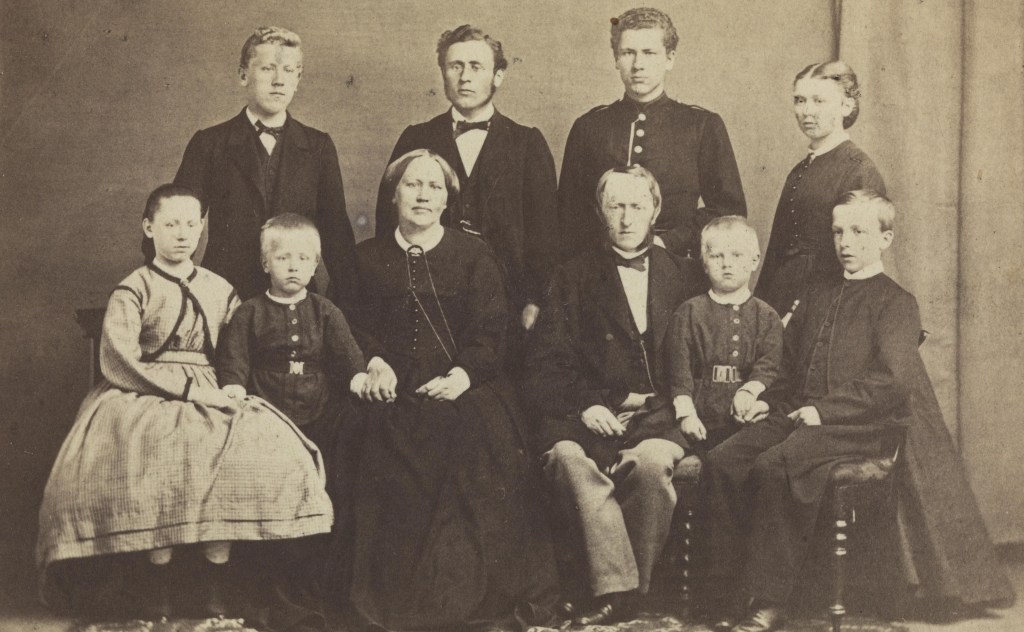
Seated from left: Sigrid Bølling, Alexander Nansen, Adelaide Johanne Thekla Isidore Nansen b. Wedel-Jarlsberg, Baldur Fridtjof Nansen, Fridtjof Nansen, Moltke Nansen (Baldur Nansen’s son from his first marriage).
Photograph taken ca 1865.
“A professional career as an artist was not for all women during Bølling’s lifetime, as it often had to give way to the roles of wife and mother. To continue with art as a career, and not just keep it as a hobby, was a real possibility for few and could subsequently be both discouraged and criticized. Sigrid Bølling followed her dream, even if it was met with mixed reactions” (Source: University of Oslo Wiki).
As a woman in Norway, Sigrid Bølling could not be offered a public art education, and therefore chose to study art abroad. It was not possible for women in the 19th century to enroll in public art academies, so many chose to study with private individuals and afterwards in designated women’s classes at private painting schools.
In the first half of the 1880s, Bølling moved to Copenhagen, Denmark where she received her initial art education as a student of several painters including Frank Hemingsen, Bernhard Middelboe and Peter Severin Krøyer, who were known as part of the Skagensmalerne, a Scandinavian artist colony.
Bølling was part of a wave of Norwegian artists who were influenced by the modern painting movements in Paris during the 1880s. The prestigious salons in Paris became a meeting point for artists from all over Europe and the United States, and artists flocked to Paris, which at the time was the center of the art world. With a great focus on cultural activity and good educational facilities, Paris took on a central role. The walls in the salons had a lot of power and with a strict jury it was great to have one’s works exhibited, if you got a work exhibited it could bring international recognition.
In 1885, Bølling furthered her studies in Paris at several painting schools with a wide range of painters: Académie Colarossi (Filippo Colarossi), Académie Julian, Louis-Marie-Adrien Jourdeuil, Léon Bonnat, Pascal Dagnan-Bouveret, Raphaël Collin, Henri Gervex, Jean-Leon Gérôme, and Tony Robert-Fleury. After her studies, she was for a time a teacher at Jourdeuil’s and Gervex’s painting schools before she opened her own private studio, where she received students.
She lived in Paris for 15 years until 1900. During this period she took Summer trips to Brittany, Normandy, and Savoie in France to find models and motifs. With French countryside and peasant life in view, it was not so unnatural that the regions of Normandy and Brittany became a desired travel destination for salon artists. These areas are famous agricultural regions in France with rich farming life and a lush nature.
Bølling painted picturesque scenes from the French countryside during these trips, such as Fatiguée. Bondekone fra Normandie (Tired. Farmer’s wife in Normandy, 1888), Den gamle brønn i Concarneau (The Old Well in Concarneau, 1886), Fra stranden ved Concarceau (From the beach at Concarceau), and En Melkekone (A Milkmaid, ca 1888). Her picture The Old Citadel in Dieppe was exhibited at the Kunstforeningen in Kristiania in 1894. These paintings reflect her ability to capture the essence of rural life and the people within these communities.
She exhibited regularly at the Paris Salon – the first time in 1885, and was awarded a gold medal at an exhibition in Rueuil, France. In 1887 she succeeded in being purchased by the French state with the painting “Fisker i Norge” (Fishing in Norway) and in that connection, received the honourary distinction of Officier d’Académie Française (ca 1898). The title is awarded by the French Ministry of National Education to recognize individuals who have had a notable impact on the French educational and cultural landscape.
In Lyon in 1897 she exhibited what has been referred to as her famous Sognefjord picture, a painting which was also shown during the Paris Salon the year before.
In Kristiania, around 1902, Bølling ran a painting school in Hansteens gate. In Norway, she painted several landscape motifs, for example “Fjærland in Sogn“. A fine example of her work from Norway, “Salmon fishery in Norway“, was shown at the Paris Salon in 1897.
From 1904 to 1907 she had several long stays in Italy. She spent most of her time in Rome and the surrounding rural districts, where she made numerous sketches from Campagna which were exhibited at the Rome Salon. In Italy she painted motifs such as Fra Aquila and Fra Italien. She ended her stay with a solo exhibition in Rome in 1907.
Shortly afterwards she returned to Norway, where she followed up her success when two of her paintings were purchased by the Norwegian royal couple in 1909 – on display at the Royal Palace, Oslo. During President Fallière’s visit to Kristiania, she was once again honored by the French state, this time with the distinction of Officier de l’Instruction publique. This was a higher honor than Officier d’Académie, given to those who had rendered even more distinguished services.
Bølling’s art production was large and varied. She painted portraits, still life, landscapes and animal and flower motifs. She mainly painted figurative everyday scenes from the French countryside, but in later life she painted several landscape paintings. Bølling’s stylistic features are characterized by her stay in France, where she was inspired by French artistic movements. She adhered to salon realism, a naturalistic and realistic style usually in the form of an open-air painting, popular in the Paris Salon.
Below is a collection of Sigrid Bølling’s paintings. “Fatiguée. Bondekone fra Normandie” and “Den gamle brønn i Concarneau” are owned by the Norwegian National Museum which holds the state’s public collection of art, architecture, and design objects.
“Fatiguée. Farmer’s wife from Normandy” is exhibited in room 57 at the national museum which features socially and politically engaged art. The exhibition is given the name “Ta del i din tid” (Take part in your time). This painting is one of Bølling’s major works, showcasing her mastery of outdoor realism, a style inspired by French artists who focused on scenes of rural and urban life. The realists aimed to depict everyday life with honesty and truthfulness, capturing the daily activities of people in remote areas as they truly were.

Of the small number of paintings that have found their way onto the market, most of these are harvesting scenes. During her time in France, she immersed herself in the pastoral landscapes and the rustic charm of the countryside and developed a deep connection to the land and its people. Her paintings often depict scenes of labor and leisure, portraying her subjects with authenticity and respect. Through her use of natural light and a muted color palette, Bølling’s art evoked the quiet beauty and enduring resilience of the French peasantry, aligning her with the traditions of artists like Jean-François Millet and Gustave Courbet, who sought to elevate the mundane to the sublime.
“Painted about 1885 while she was working in Concarneau, the artist fills the canvas with interest. The sardine boats, driven by a strong breeze on their return to harbour, are shown by little more than a casual tip of the brush. A few sheep graze on the cliff edge above the rocky seashore. The work is skillfully lit, the shining sands contrasting with the browns and ochre of the rocks. A path leads to a cottage, typical of many found on the Breton coast. It is set on exposed high ground but protected from the high water of winter storms. The few scraggy bushes and the cottage itself could have been lifted from the West of Ireland. It may be approaching midday and some of the work party has gathered in a corner of the beach to prepare lunch, which was traditionally carried to the fields by the harvesters, usually a family group of two or three generations. The scene looks idyllic but it should be borne in mind that these were people struggling to secure an existence sourced entirely from the land and the sea. The kelp gathered made compost on which the success of an entire crop would depend. The patient stance of the two carthorses is reminiscent of Augustus Burke’s depiction of seaweed gatherers on the Wexford coast while Walter Osborne or Nathaniel Hill could have painted the figure of the standing girl. The painting is a great example of the universality of the artist colonies of the 19th century” (Source: Milmo-Penny Fine Art).
Collective exhibitions
- Autumn exhibition, Bergen, 1886
- The Autumn Exhibition, Oslo, 1887
- The autumn exhibition, Oslo, 1889
- The autumn exhibition, Oslo, 1892
- The autumn exhibition, Oslo, 1902
- Bergen Art Association, 1884
- Bergen Art Association, 1886
- The Salon, Paris, 1885-1900
- World Exhibition, Paris, 1889
- The Salon, Rome, 1904-1907
- Lyon, Rueuil, Nantes and other French cities
Solo exhibitions
- Blomqvist’s Kunsthandel (Art shop), Oslo, 1903
- Blomqvist’s Kunsthandel (Art shop), Oslo, 1904
- Kristiania, 1907
- Rome, 1907
- Copenhagen, 1913
In 1909, Bølling returned to Copenhagen where she remained for the rest of her life. Her final exhibition was held in 1913 where she exhibited 50 paintings in the main hall of Den Frie in Copenhagen.
Sigrid Bølling passed away at the age of 65 on 30 December 1917. She never married or had children. Her life’s passion was her art and her legacy lives on as one of the great Norwegian female painters.
About the Author
For more articles visit Dayne’s Discoveries Blog, browse our online shop, or contact us to share information, stories, or photographs relating to Sigrid Bølling.











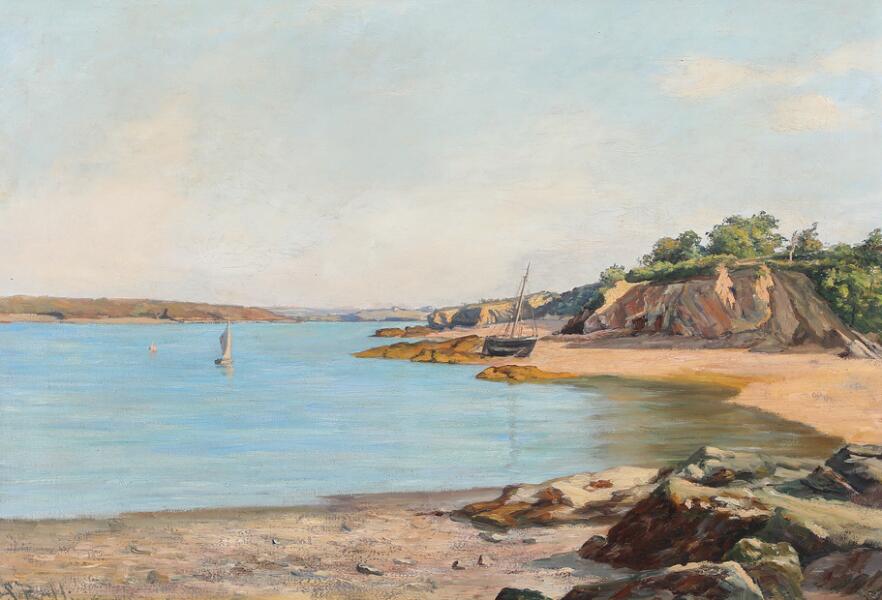


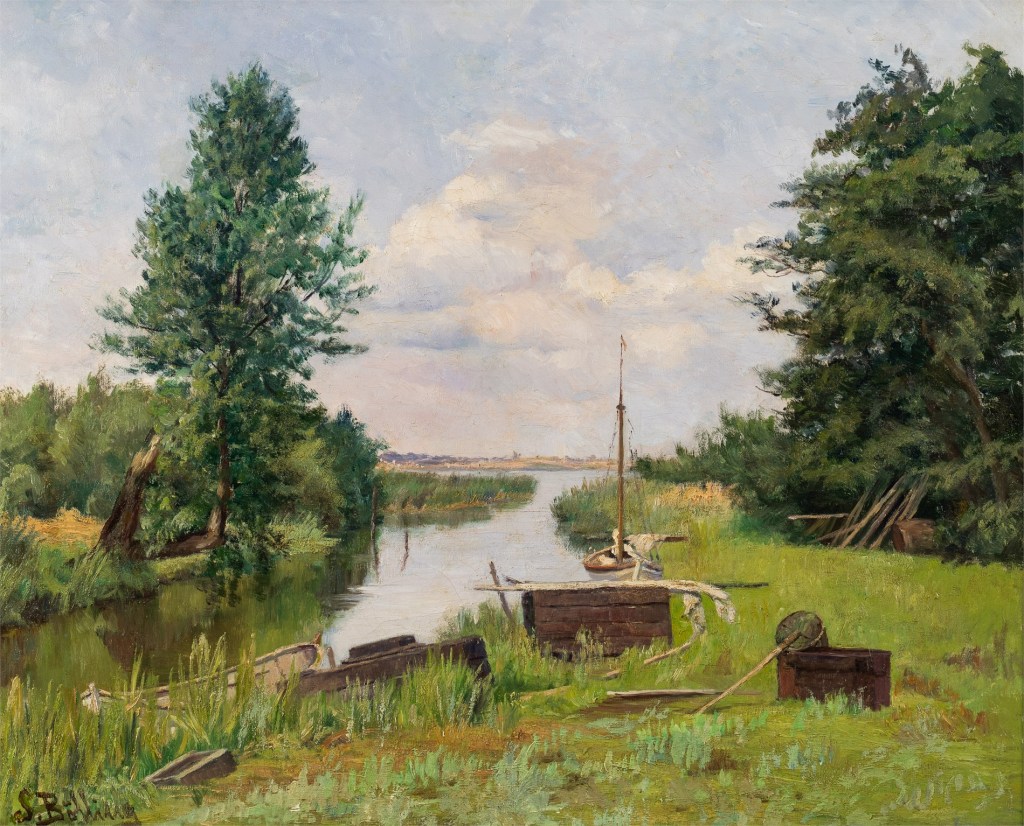



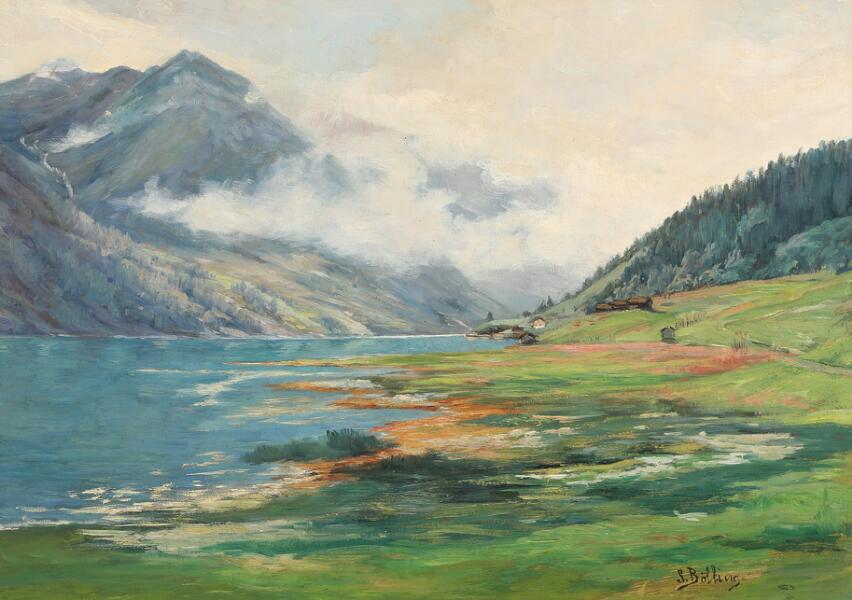





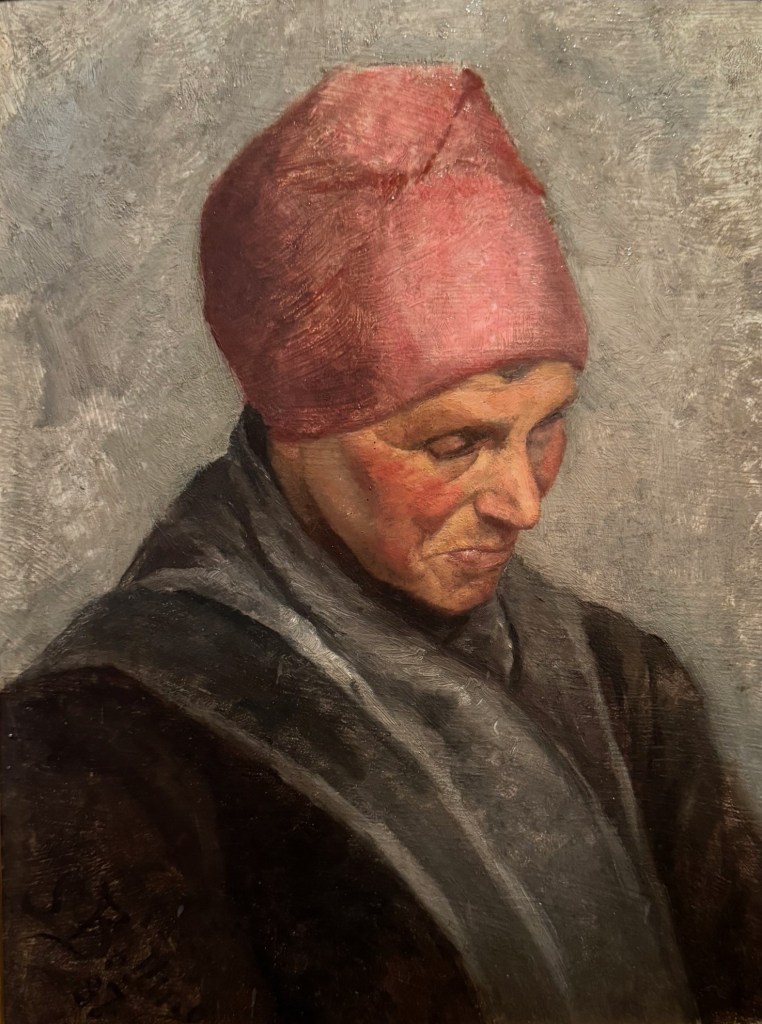



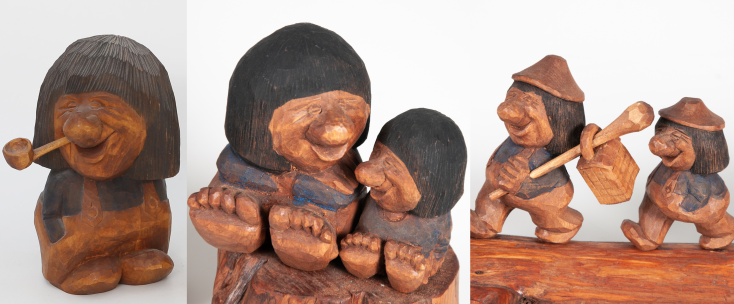
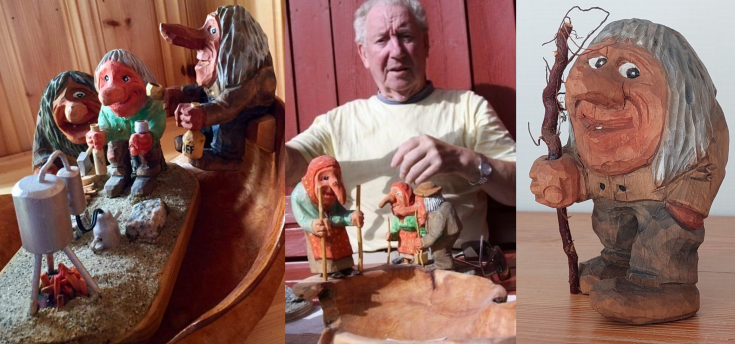
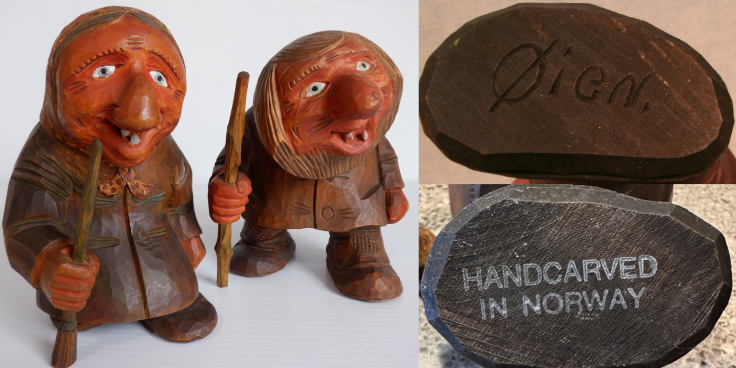
Leave a comment